Enjoy this super easy recipe for DIY linen spray that will revive the freshness and crispness of vintage linen fabrics, permeating them with sweet lavender.
Do aerosol air fresheners make you gag? Do those smelly solid air fresheners give you a headache? How about the spray starch aerosols? Oh, you haven’t even seen a can of spray starch in decades? Yeah, I know. I haven’t had one since the 1980s when I discovered this awesome DIY spray that takes the place of room fresheners, and those spray starch cans, too.
Make your own linen spray. And its cheap, easy, and sustainable alternative to store-bought brands. In fact, it’s so easy that I keep forgetting to make some and take a picture, so I can actually tell you about it.
My secret, super-easy Linen Spray and Room Freshener Spray
The word “Linen” is universal for household textiles. Woven tea towels, sheets (bed linens), tablecloths (table linens), and even bath towels are all referred to as “linens.” However, today none of these items are commonly made from linen fibre — the long, smooth fibres of the flax plant, usually called linen only when the fibres are over 12 inches long and spun into thread.
The term is universal for household textiles because, before the introduction of cheap synthetic fabrics, household textiles were commonly made from linen or a blend of linen and cotton. 100% linen towels are no longer common, but linen tablecloths and napkins can still be found in thrift shops and antique stores.
Who irons these days? It’s true that ironing, although it is way easier today with our modern, plug into the outlet, steam irons than our great grandmothers had it. It isn’t done commonly. So I’m not going to convince you that you should start ironing again. But if you decide you want to enjoy the luxury of a crisp, vintage linen tablecloth on your dining room table, learning to iron it properly may be a skill that you enjoy.
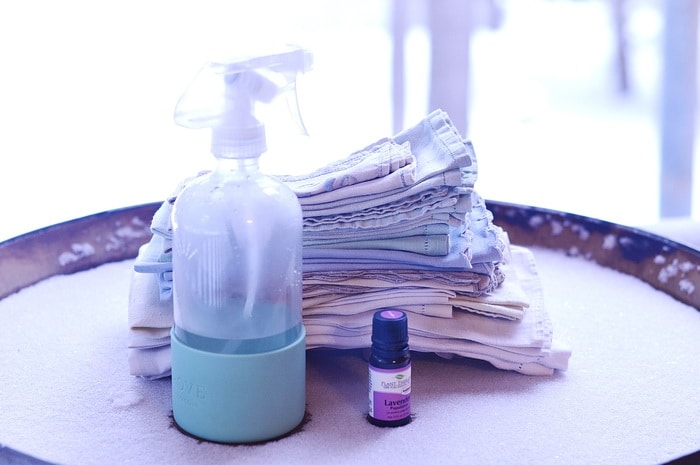
How to iron linen
Linen needs to be ironed while still damp. If you happen to have a cold mangle in your cleaning cupboard, you won’t need a steam iron to give your linen a smooth, crisp hand. But, if like the rest of us, you didn’t keep great grandmother’s mangle, you can still get the smooth, crisp feel with a steam iron, and damp linen, be sure to hold the chemical spray starch though.
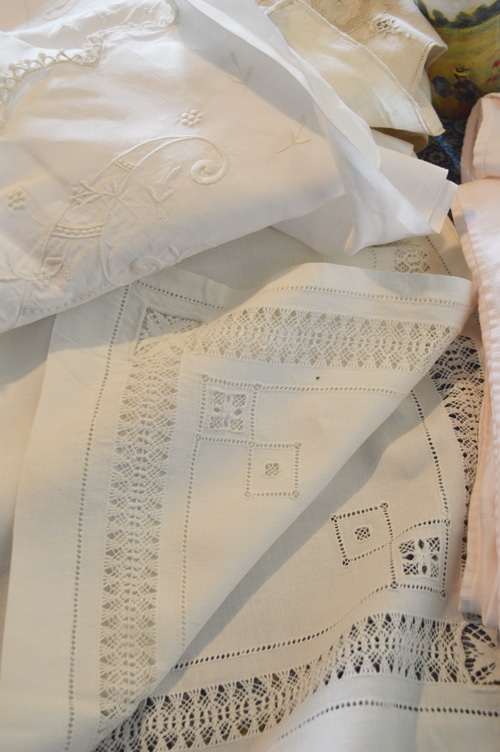
Even well-washed linen contains natural pectins still in the fibre, which will stiffen when the cloth is ironed when damp.
You can keep your linen damp by line drying it and bringing it in before it is quite dry and immediately ironing it, before putting it away. I’m not that organized though. And usually, the wash is being brought in while the table is being set for dinner. Not exactly the best time to haul out the ironing board and plug in the iron. So I resort to plan B — utilizing DIY linen spray.
DIY Linen Spray and textile freshener
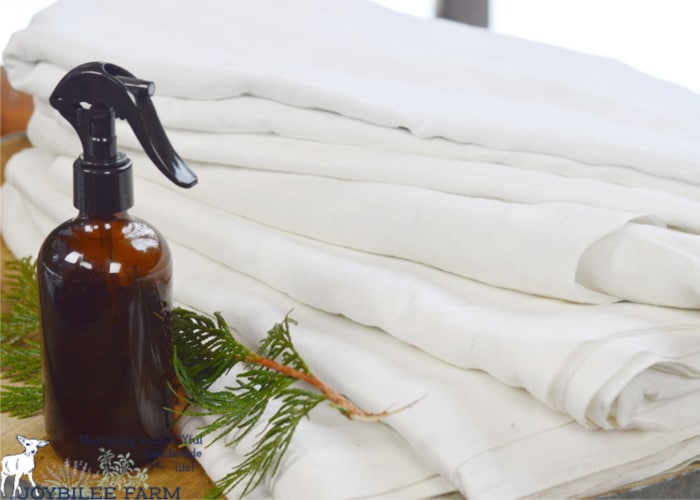
- 1 1/2 cups of filtered water (use distilled water if you will be storing this more than a week)
- 1 tsp. (5ml) Lavender e.o.
- a Spray bottle
This recipe will keep a long time without going bad when made with distilled water, or water filtered with the Berkey filter. Warning, if you have well water that leaves a stain in your toilet bowls, I recommend that you use distilled water for this recipe. The minerals that stain your toilet bowls (calcium, manganese, or iron) can stain your textiles when you iron them when damp.
Fill your clean spray bottle with warm water, add your lavender e.o. Shake well. It’s ready. Always shake before using.
Related article: Hunting for Vintage Linen Textiles to Make Your Home Cosier
How to use DIY Linen Spray for ironing
To use for ironing, spritz the area of cloth you are about to iron. As you apply the iron the linen will smooth out and smell wonderful. This spray works wells on other clothes that you are ironing, too, not just on linens.
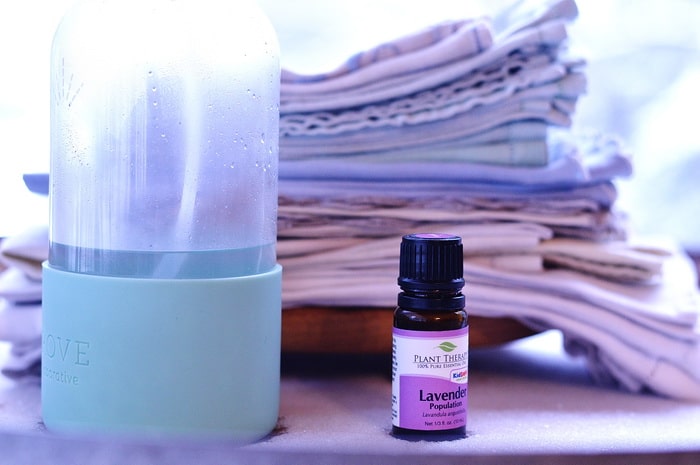
How to use this for freshening household linens
This spray can be used on sheets, towels, tablecloths, and napkins in your linen closet. It repels moths and keeps the textiles fresh. Hanging bunches of lavender in the cupboard also works to keep the textiles fresh and sweet-smelling.
Spray the sheets and pillowcase when you make the bed in the morning. The dampness will go by bedtime and you will induce sweet and restful sleep.
Spritz the bath towels and keep the bathroom smelling fresh between cleanings. See also, 27 Green Uses for Vintage Linens.
How to use this for freshening your home
Gently mist the air in your home to freshen it, with the DIY Linen Spray
Spritz fabric-covered couches, and chairs, cloth curtains, and carpets to clean the air and remove the “dead” air smell in your home.
Burn beeswax candles during your dinner hour, to add negative ions in your home and remove toxins, and bacteria and improve the indoor air quality. A crisp, smooth linen tablecloth and beeswax candles might just make you want to cook from scratch every night.
Be aware, this will not mask pet odours or remove the odour from pet accidents. You’ll need to do thorough cleaning for that. But once you’ve cleaned, spritz the air to maintain the freshness.
Don’t like the smell of lavender e.o.? Other essential oils can be used in the place of lavender in this recipe, however, some of the effects will be different. Try Lemon essential oil, rose essential oil, sweet marjoram essential oil, or grapefruit essential oil.
Grab my Book and start using essential oils to save more money every single day!
The Beginners’ Book of Essential Oils is the answer to the question, “Where do I even start?” Explore your first 10 essential oils and learn to use them with confidence, with over 80 recipes for health, beauty, and cleaning products. Written with the beginner or intermediate essential oil user in mind.
This essential oils guide sifts through the hype and confusion and gives you the knowledge and confidence you need to safely explore 10 foundational essential oils, without needing to spend hundreds of dollars just to begin.
Written by an herbalist not an essential oils marketer, so you can trust that the information is based on real botanical research and experience and not marketing hype.



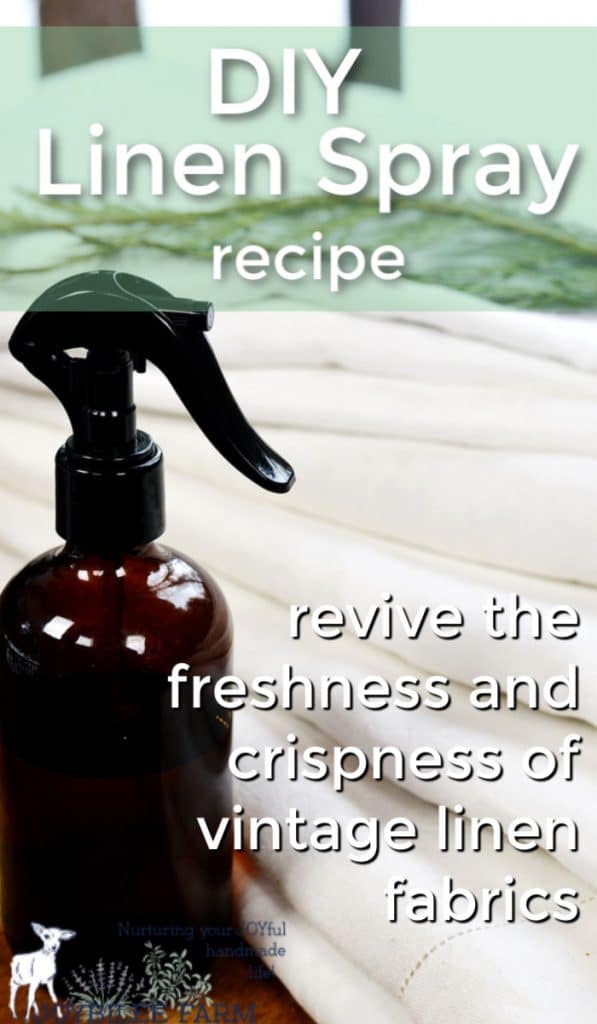
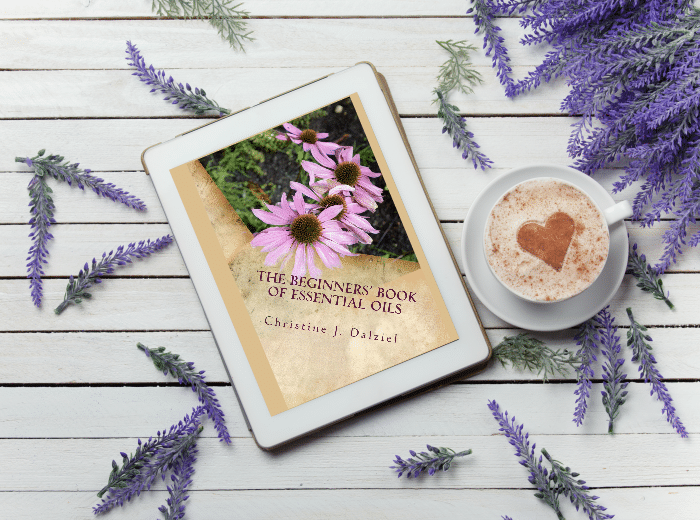


Hello from Australia! Firstly, Thank you for sharing such a great recipe for use as an ironing aid, and room refresher, and in reading the other article for alternative uses for vintage linen will be very helpful. I currently use a mix of various essential oils with my home made washing powder which I generally activate with warm water before adding to my wash load. The ingredients I use include washing soda, bi carb soda, lemon Myrtle pure Castile soap bar (which is shaved very Finley) and a small amount of borax to the mix. I generally dilute approx 1-2 tbs in hot water then add to the dispenser, and in the rinse section, I use white vinegar- approx 3 tbs, which I find provides a better sanitizer, as it washes all the residual soap from the fabric, leaving it clean and soft. Can vinegar be used as a sanitizer at the end of the wash cycle for linens too? Also, in Australia, we have a product made by Bossistos – it is a dilutable lavender oil which can be used with the spray, would this be better than just the straight up pure EO?
Is there a “best brand of e.o.” to use/buy?
Thanks!
Apparently people who worked in the lavender fields NEVER caught the BLACK PLAGUE (years ago!)
And someone who flies long haul trips regularly always wears a mask impregnated with lavender e.o.
Thank you for your recipes! Very interesting and helpful!
You mentioned “Other essential oils can be used in the place of lavender in this recipe, however, some of the effects will be different” Can you elaborate on how it would be different, other that the scent, of course? I have vanilla on hand. Thank you for your informative articles on vintage linens. Very helpful.
Lavender is used to repel moths and beetles that eat natural fabrics. It does this by confusing their pheromones. Vanilla wouldn’t have the same effect. Eucalyptus, peppermint, marjoram, cedarwood may have a similar effect to lavender. It might be dependent on the species of the moth or beetle you have where you live.
What about using a citrus, lemon or tangerine, EO instead of the lavender?
I’m still confused. I am a camper and read that linen towels are lighter and more absorbent, and dry faster than cotton ones. I bought a very large linen skirt & tried it out. I’m not sure I’m experiencing that wonderfulness this other camper was professing. I don’t want to burn it to see if it’s true linen. What do you suggest. I am a brand new reader.
Thanks,
Debra
Hi, Debra I think you’ll find linen clothing a different issue than towels. Linen clothing tends to be crisper and wrinkle prone. My experience is that it doesn’t soften in the same way as towels and tablecloths, probably because it isn’t washed as often. But the linen spray should work just as well with it.
Since the E.O. doesn’t dissolve in the water do you ever have problems with it making oil specs on the fabric even if well shaken?
I shake it very well. Since its an essential oil and not a carrier oil it evaporates into the air easily. I haven’t had any problems on fabric. But don’t substitute lavender infused oil for the essential oil in this recipe.